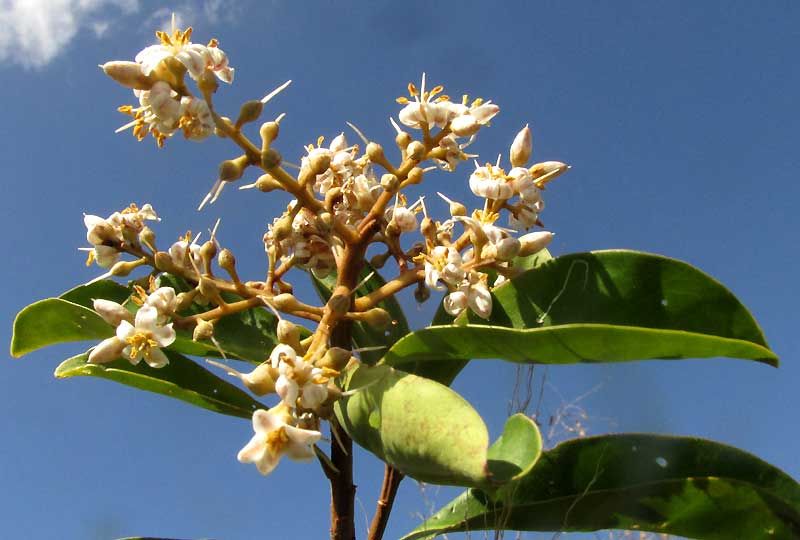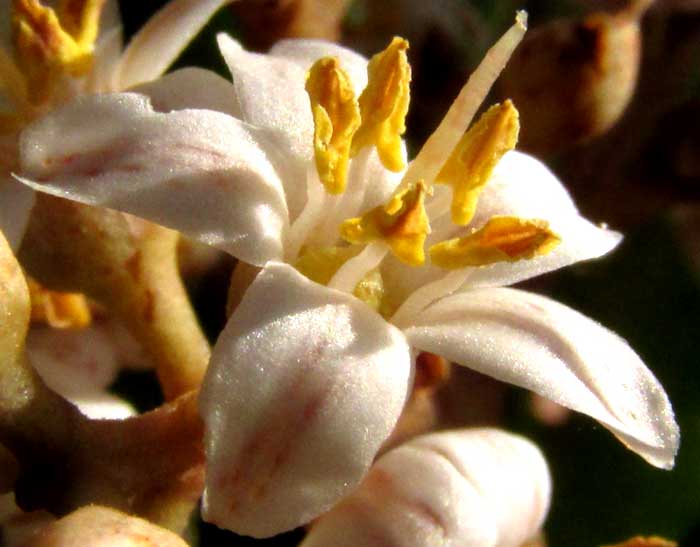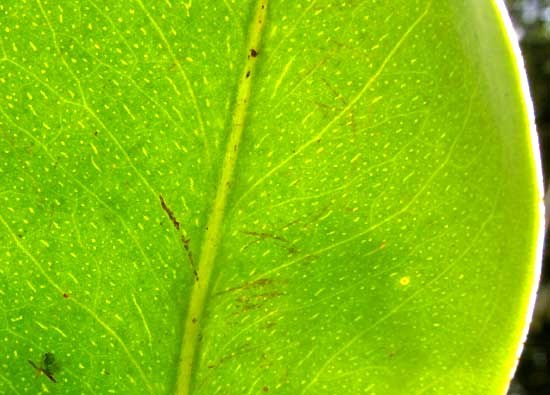Excerpts from Jim Conrad's
Naturalist Newsletter
from the December 28, 2018 Newsletter issued from Rancho Regensis north of Valladolid, Yucatán, MÉXICO;
elevation ~40m (~130 ft), N~20.876°, W~88.170°
MARLBERRY FLOWERING
At the weedy edges of abandoned Maya cornfields and along fencerows at the rancho, a shrub or small tree has been producing soccer-ball-size flowering heads of little white flowers, a branch of which is shown below:

The little tree tends to grow in such clutters of weeds and bushes that unless you look closely it's not all that attractive. However, closer up the flowers start taking on character, and the leathery leaves exhibit a dignified simplicity, as evidenced below:

From a distance, the plant with its inflorescences of small, white flowers looks like a shrubby member of the Nightshade or Tomato Family, but the flowers showed details excluding it from that family, and hinting that here was something special. Below, the detail is clearly visible:

The vast majority of flowers of this basic structure -- five-lobed corolla and calyx, five stamens, superior ovary bearing a single style -- have their stamens alternating with the corolla lobes. This blossom's stamens arise opposite them. I can only think of the three families with such flowers, but with stamens opposite corolla lobes: the Primrose Family (whose species are nearly always herbaceous); the Sapodilla Family (usually producing milky sap), and; the Myrsine Family, which I'd not encountered before. Knowing that here I'd need to "do the botany," I looked for more field marks.
Below, you can see that the stem was notably smooth and hairless:

Gnawing off the top of an immature fruit, I found just one seed inside, as shown below:

Holding a leaf up against the Sun revealed many translucent spots and streaks, as shown below:

That confused me because I've only seen such streaks in the Flacourtia Family, but flower corollas in that family produce separate petals, not lobes on a corolla tube, and the stamens alternate with the petals.
In the end that left just the Myrsine Family, of which only one species is listed for the Yucatan Peninsula, and that was ARDISIA ESCALLONIOIDES, which turned out to be our little tree. It occurs in several English-speaking countries, so it goes by several names, the most common one seeming to be Marlberry, also Dog-berry. It's mostly a plant of the Caribbean islands, but also it occurs in Florida, this part of Mexico, Guatemala and Belize.
I read that Marlberry grows up to 50ft tall (15m), and that the drupe-type fruits turn from green to red and then finally black. I find no traditional medicinal uses for it. Its fruits are reported as edible, but not good tasting. However, they look just right for certain bird species.